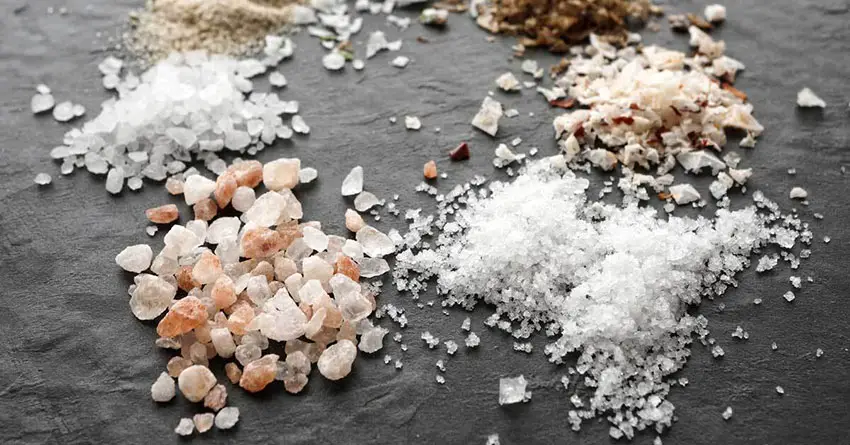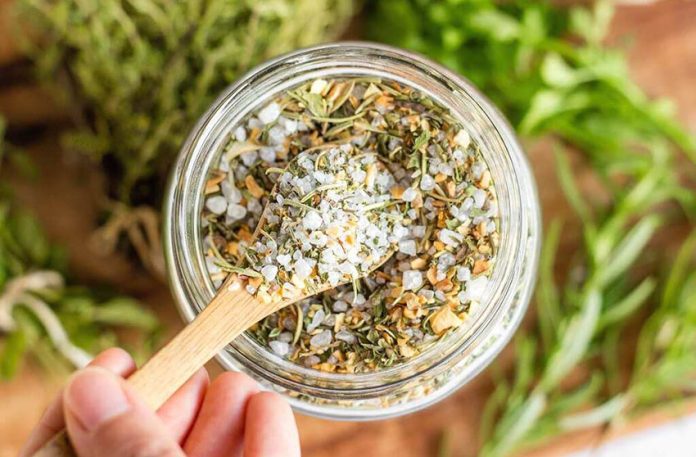Mexican cooks and culture appreciate good salt; in fact, the Latin (and Spanish) word for salt, sal, is the root of the word “salary.”
Sadly, like so many other things, the essence of this simple, natural product has been lost through commercialization. But if you know what to look for, Mexico offers several delicious, affordable, natural salts.
Some of the best natural sea salt comes from Colima, and if you’ve been anywhere on the west coast you’ve undoubtedly seen bags of it for sale at roadside stands in beachfront towns. Full of minerals and made traditionally (i.e. organically), the crystals are quite big and a bit chunky, with a salty, fresh taste and naturally occurring minerals.
In the U.S. you’d pay about $2 an ounce for this salt through Amazon; outside of Puerto Vallarta on the coastal roads half-kilo bags are five for 50 pesos. Most Mexican grocery store chains carry Colima salt as well.
If you can find it, Mayan Pink Salt is another wonderful natural salt. Found in lakes on the northern tip of the Yucatán peninsula, the pink color comes from the thousands of tiny brine shrimp that inhabit the waters there.
Baja California is home to Exportadora de Sal, the biggest commercial saltworks in the world. This salinera in the Ojo de Liebre Lagoon is within a UNESCO World Heritage Site. It takes about a year for a batch of seawater to be turned into salt through a series of crystallization steps. Some of their commercially packaged salts have iodine and anti-caking agents added, though, so do read labels carefully.
Without going on too much of a rant, refined table salt has anti-caking agents added to increase shelf life, as well as aluminum, ferrocyanide and bleach. These chemicals, which keep salt from absorbing moisture on the shelf, also interfere with salt’s main function of regulating hydration in the body.
Table salt is highly concentrated and doesn’t do your body or your food any favors.
If you’re accustomed to using common table salt on everything, the stronger, harsher, slightly metallic taste will seem “normal” to you. It may take a little while before your taste buds can appreciate the cleaner, lighter taste of a less-refined salt. Do a side-by-side tasting and you’ll see the difference.
Kosher salt — inexpensive and easy to find – is also unrefined, with larger crystals that dissolve slower, so it’s easier to control how much you’re salting something. Why is it called kosher salt? Not because it’s been blessed by a rabbi – although it can be — but because the size of the crystals makes it ideal for use in the koshering process of drawing moisture from meat.
The best thing is to find one kind of salt you like and stick with it. (But not table salt!) You may need to use more of a natural or kosher salt to get the flavor you’re looking for.

Fresh Garlic Salt
Minerals and iodine in table or sea salt can cause the garlic to discolor, so be sure to use kosher salt. Have a dehydrator? Use that instead of the oven.
- About ¼ cup of garlic cloves, about 1½ heads of garlic
- 1 cup kosher salt
Peel garlic cloves and place in a food processor. Add the salt. Process for about 20 seconds until it reaches the consistency of sand. Spread mixture on a baking sheet and bake at 180 F for about an hour, until dry and crisp. Put mixture back into the food processor and pulse several times until it resembles the texture of cornmeal. Store in an air-tight jar. Keeps about 3 months.
Herb Salt
Drying the fresh herbs yourself — in a dehydrator, oven or air-dried — will make for more vibrant flavors, but it’s not necessary. This recipe makes 32 ounces; cut it down or make small jars to give as gifts.
- 2 cups kosher or coarse sea salt
- ½ cup dried parsley
- ½ cup dried rosemary
- ½ cup dried thyme
- ½ cup dried oregano
- ½ cup dried granulated garlic (see recipe above)
(If drying herbs in the oven, set at 150-200 F and watch carefully. Time will depend on type and amount of herbs.) Using fingers or a fork, combine salt and dried herbs in a large bowl until all ingredients are evenly distributed. Store in an airtight glass jar.
Chile Lime Salt (like Tajín)
Use packaged chile powder or make your own.
- ¼ cup salt
- 1 tsp. chile powder OR 1 dried ancho chile
- Juice (and zest) of 1 lime
Zest the lime; set aside. In a small bowl, mix salt and juice of the lime. Add zest and spread in thin layer on a cookie sheet. Bake at 200 F for 10-20 minutes, stirring once. Don’t let it get too brown! Wipe the ancho chile clean and grind into a fine powder, using a blender, spice grinder or food processor. Add chile powder to salt/zest mixture and mix well. Store in an airtight container.

Salt-Crusted Fish
Sealing the fish with a salt paste results in a flavor-filled, moist flakiness. The “stuffing” ingredients are suggestions — feel free to play around with what you have or use none at all.
- 1 whole fish, with skin, about 1 kilo
- 4½ cups kosher salt
- 3-4 egg whites
- ¼ cup water
- 3 Tbsp. chopped cilantro or parsley, divided
- 2 Tbsp. julienned sun-dried tomatoes
- 1 Tbsp. chopped kalamata olives
- 2 Tbsp. chopped shallots
- 2 slices lemon, sliced in half
- 1 Tbsp. minced garlic
- Black pepper
Preheat oven to 400 F. If stuffing the fish, fill the cavity with the sun-dried tomatoes, olives, shallots and lemon slices. Make two small slashes through the skin on each side of the fish. Rub exterior of fish with the garlic, then sprinkle with 1 Tbsp. of parsley/cilantro and pepper.
In a bowl, mix salt, egg whites, remaining parsley/cilantro and water to a paste-like consistency. Cover a cookie sheet with parchment (it makes clean-up easier), then use the paste to create a “bed” for the fish, spreading a layer about ¼ inch thick that’s approximately the size of the fish. Lay the fish down on the “bed” and cover completely with salt mixture. If the fish is too long, leave tail uncovered. Try to seal the fish on all sides. Bake about 25 minutes for a two-pound fish. (Add five minutes more for every extra pound.) Let rest for 10 minutes; remove salt crust and skin. Serve immediately.
Janet Blaser has been a writer, editor and storyteller her entire life and feels fortunate to be able to write about great food, amazing places, fascinating people and unique events. Her first book, Why We Left: An Anthology of American Women Expats, is available on Amazon. Contact Janet or read her blog at whyweleftamerica.com.
